Promoting the Use of Renewable Energy and Hydrogen
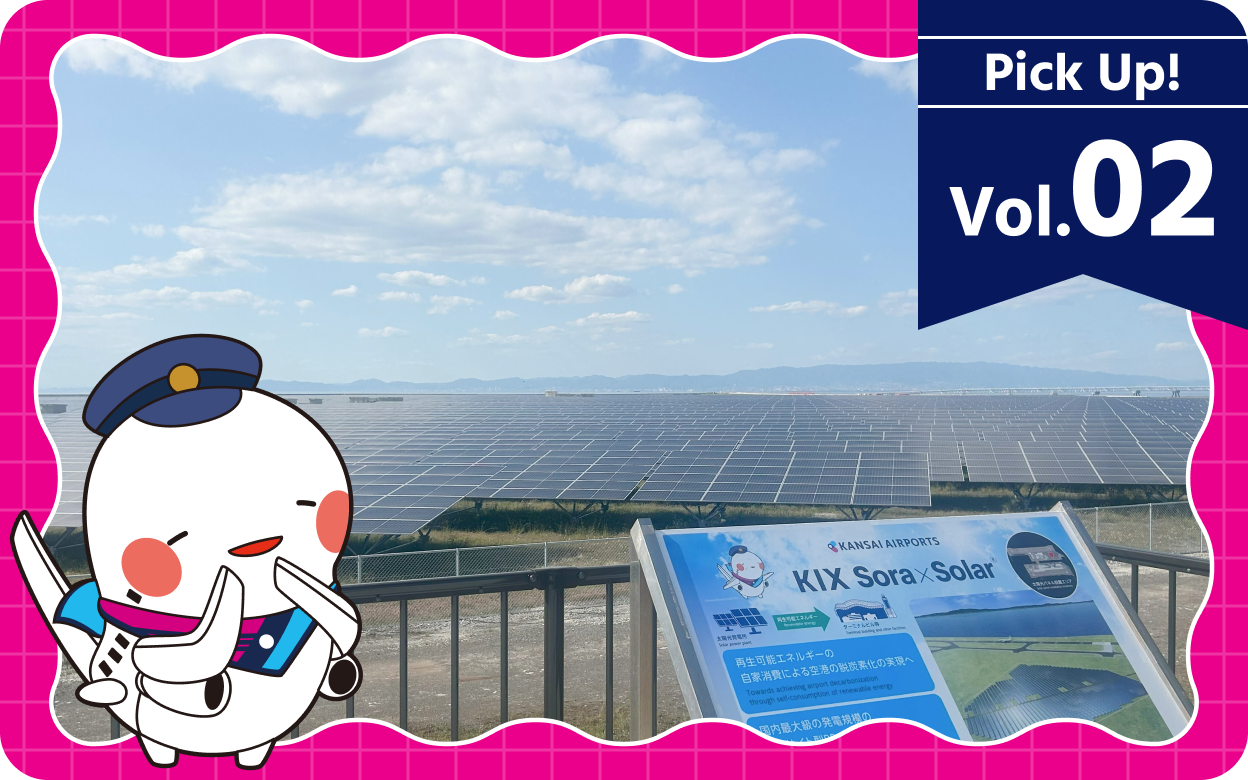
Kansai Airports Group aims to realize the decarbonization of the airports by promoting the introduction of solar power generation and harnessing hydrogen energy.
In-airport solar power generation in-airport consumption
Installation of solar power generation facilities and decarbonization of the airports
The introduction of renewable energy is essential to achieve the target of cutting 50% of GHG emissions of Kansai Airports Group from FY2016 level. We are working towards decarbonization of the airports by installing solar power equipment around the airport and harnessing locally produced energy sources.
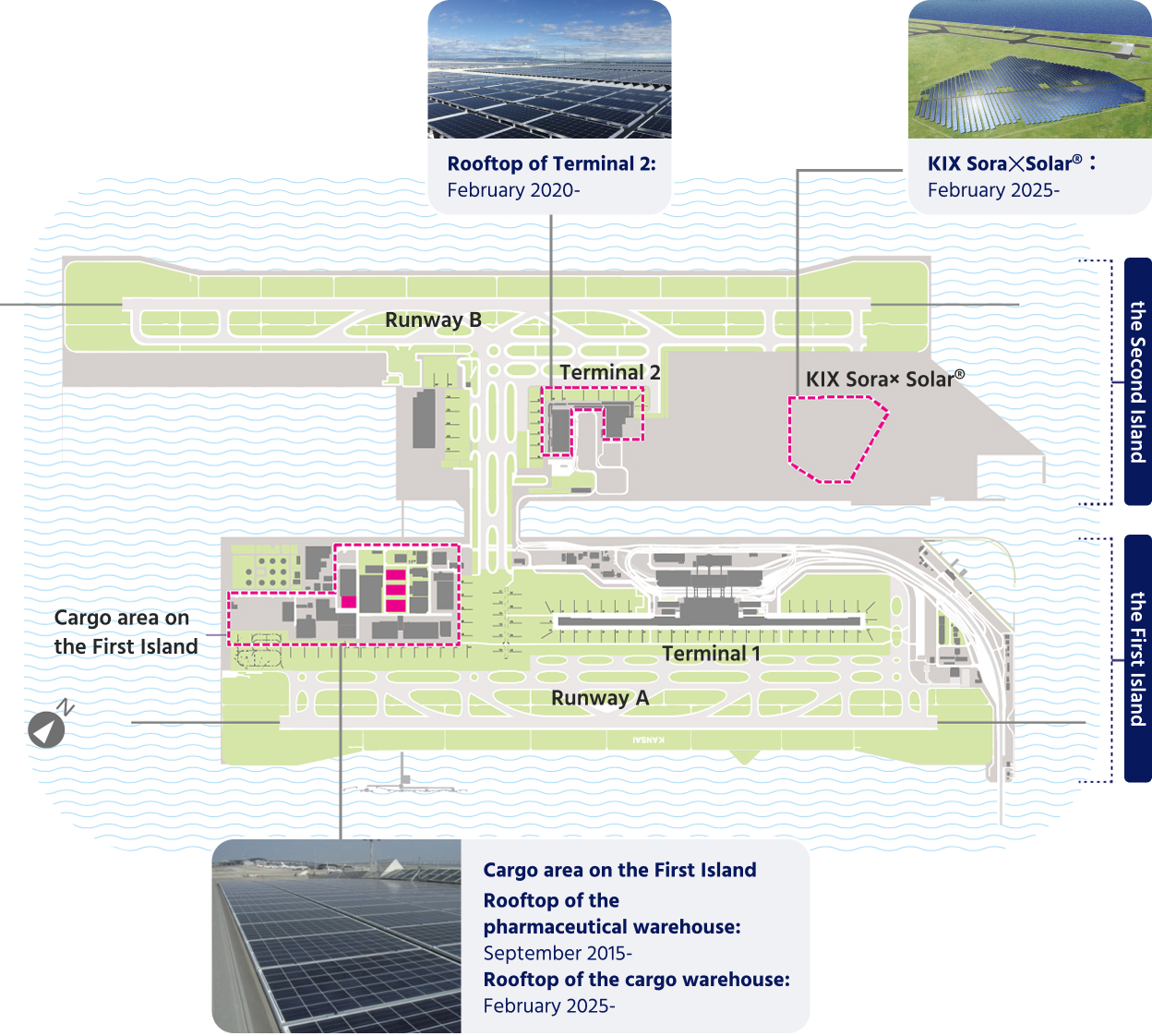
Kansai International Airport
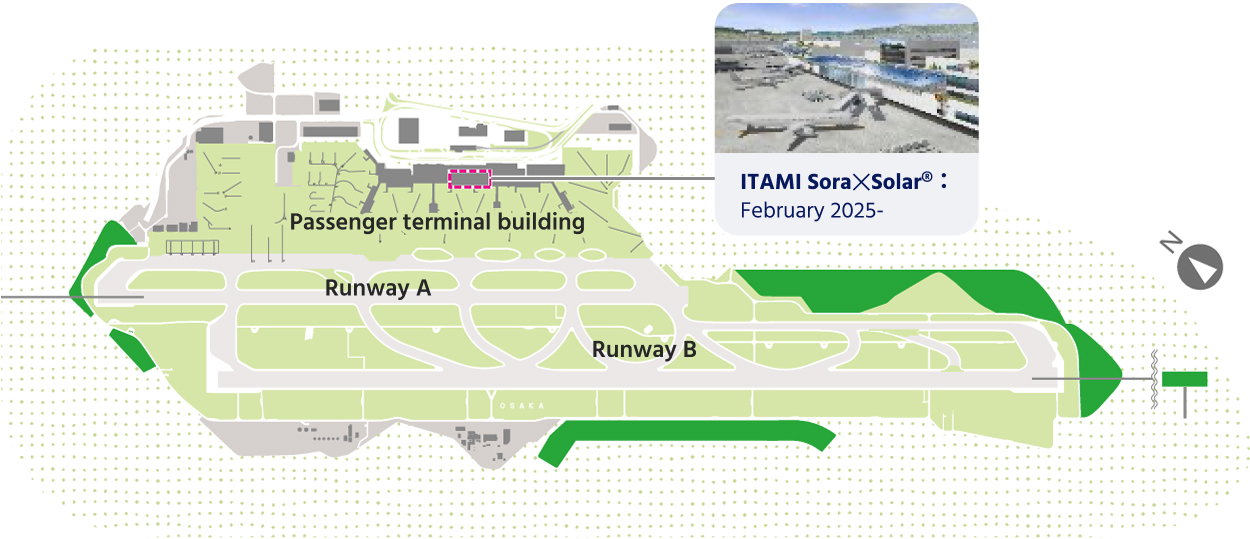
Osaka Itami Airport
Launch of KIX-ITAMI Sora x Solar®!
The largest power generation capacity in Japan with 40,000 solar panels
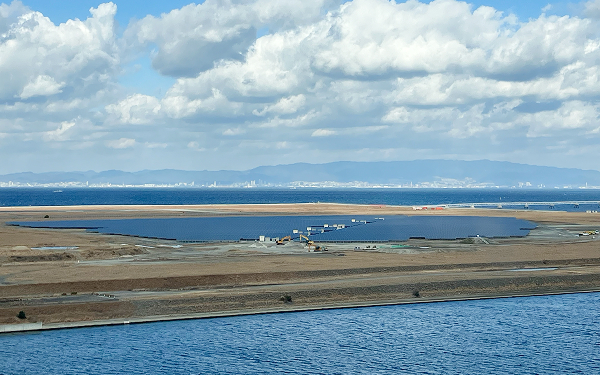
Full view of KIX Sora x Solar® (taken from the First Island)
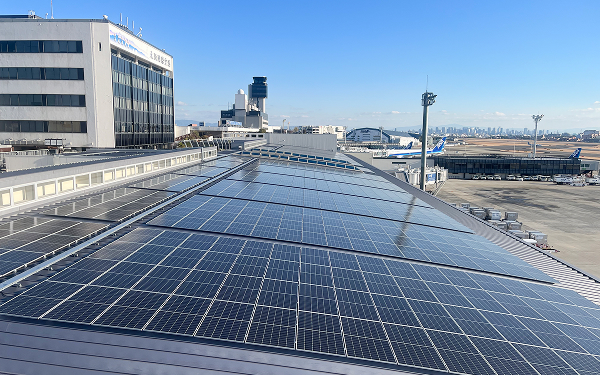
ITAMI Sora x Solar®
We launched a new solar power generation facility “Sora x Solar®” at Osaka Itami Airport and started generating and providing electricity from February 2025. The facility is equipped with the generation capacity to cover the significant daytime demand.
The electricity generated in this facility is provided to the terminal building and other facilities customers use.
*Disclosure date: July 1, 2025
Hydrogen energy that does not emit CO2 at consumption
KIX Hydrogen Grid Project
Kansai Airports is trying to expand the use of hydrogen energy in addition to other renewable energy such as solar power to achieve decarbonization of the airport, which is operated day and night.
Hydrogen is the ultimate clean energy that only emits water when burned and can be stored and transported; therefore, the energy can be used when and where it is needed.
Kansai International Airport was designated as the Comprehensive International Strategic District for Kansai Innovation in 2014, and we fully launched the Hydrogen Grid Project and has been taking active measures to establish a model case of hydrogen use at an airport.
Here is the introduction of the initiatives for hydrogen-powered fuel-cell vehicles (*).
*Hydrogen-powered fuel-cell vehicles run by powering their motors using the electricity generated by chemical reactions of hydrogen and oxygen in the air. These vehicles do not emit CO2 or substances of environmental concern while driving.
KIX Hydrogen Grid Project (Image)
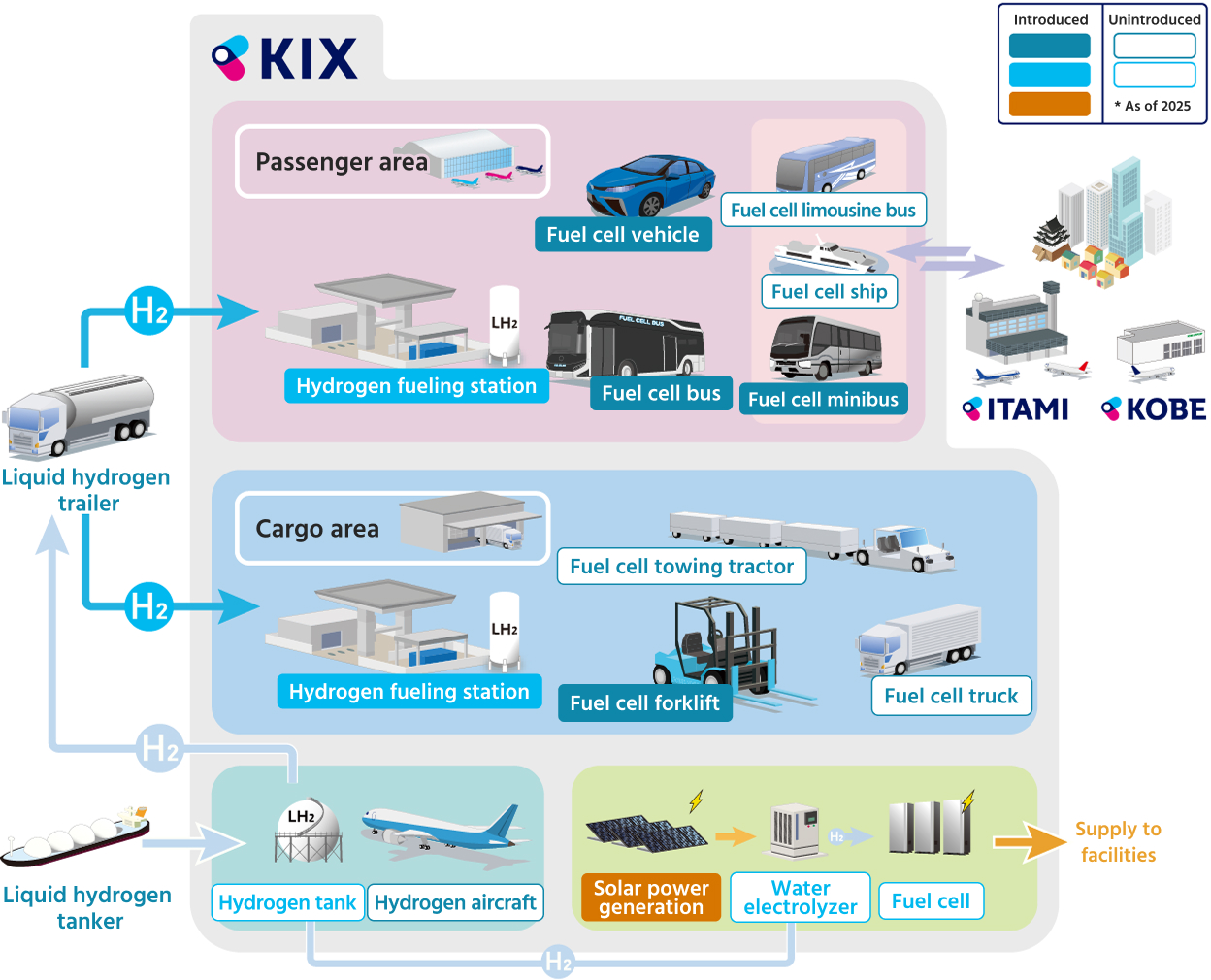
Practical use of fuel-cell folk lifts (FCFL) and installation of hydrogen stations for industrial vehicles
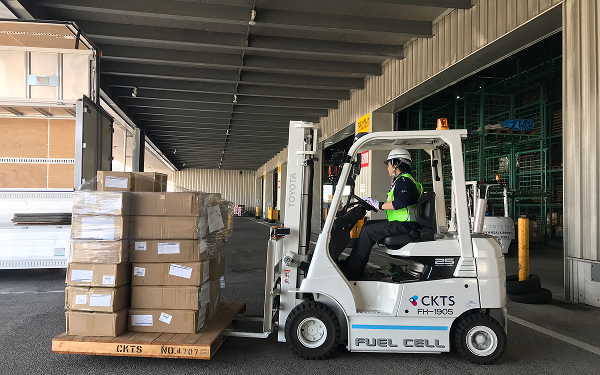
A fuel cell forklift.
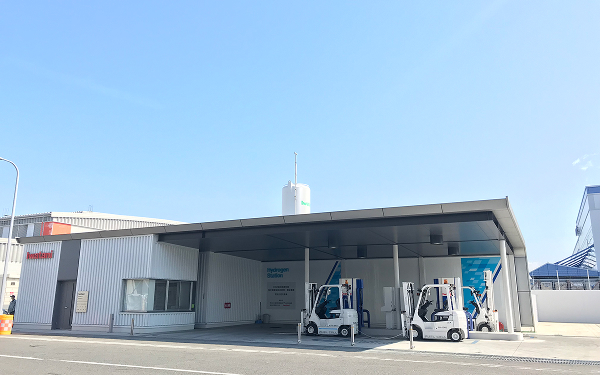
Hydrogen stations for industrial vehicles (in the cargo area of Kansai International Airport)
We installed Japan’s first hydrogen stations for industrial vehicles equipped with liquefied hydrogen tanks and a high-pressure hydrogen pipeline in the cargo area of Kansai International Airport in April 2017 and started one of Japan’s largest verification demonstrations with fuel-cell folk lifts and hydrogen stations. By using fuel-cell folk lifts for 24-hour cargo handling operation, we can reduce the CO2 emissions compared to using fossil-based or electric folk lifts. Three-minute hydrogen refueling eliminates the need for recharging and replacing batteries, enabling continuous operation of folk lifts, thereby contributing to significant improvement in work efficiency and working environment.
Installation of commercial hydrogen station and promoting the introduction of fuel cell vehicle (FCV) and fuel cell bus
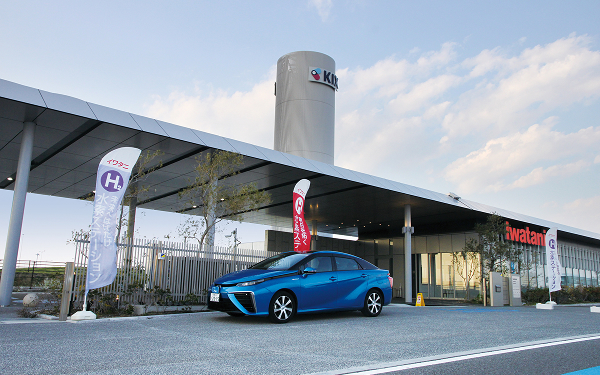
Hydrogen station (Kansai International Airport)
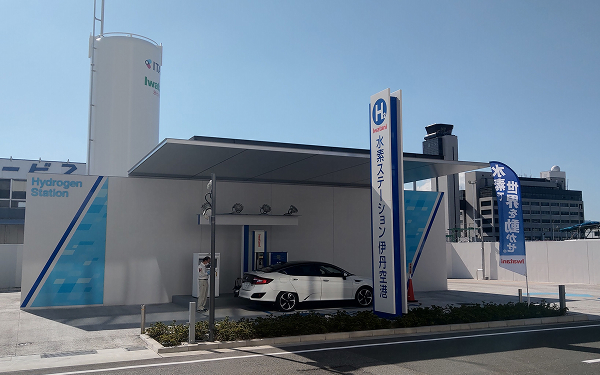
Hydrogen station (Osaka Itami Airport)
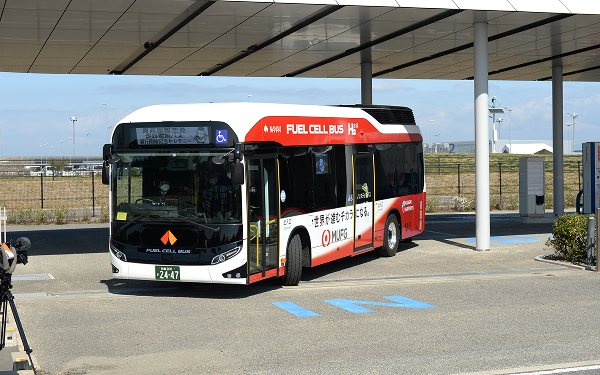
Airport island bus (Kansai International Airport)
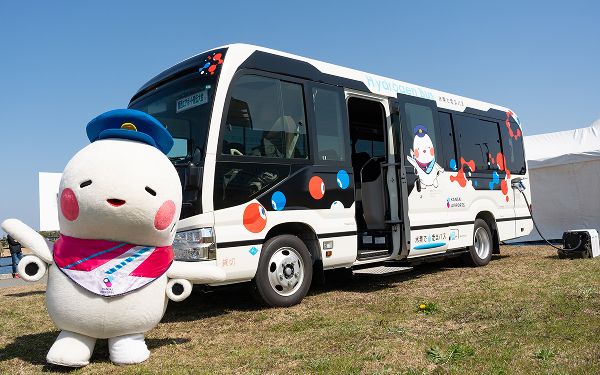
Tour bus
We started the operation of commercial hydrogen stations for our customers in January 2016 at Kansai International Airport and in April 2019 at Osaka Itami Airport.
Kansai Airports Group started to use FCV for our business vehicles and launched fuel-cell buses for the airport island bus service in March 2022, the first full-scale introduction in Osaka Prefecture, in collaboration with Nankai Bus. In February 2025, we also launched fuel-cell minibus, which was the first in Kansai Region, operated as the first tour bus of such kind in Japan. These initiatives contribute to the decarbonization of not only the airports but also of the local communities.
Hydrogen stations and hydrogen vehicles
Please refer to our environmental reports for other initiatives and activities.
